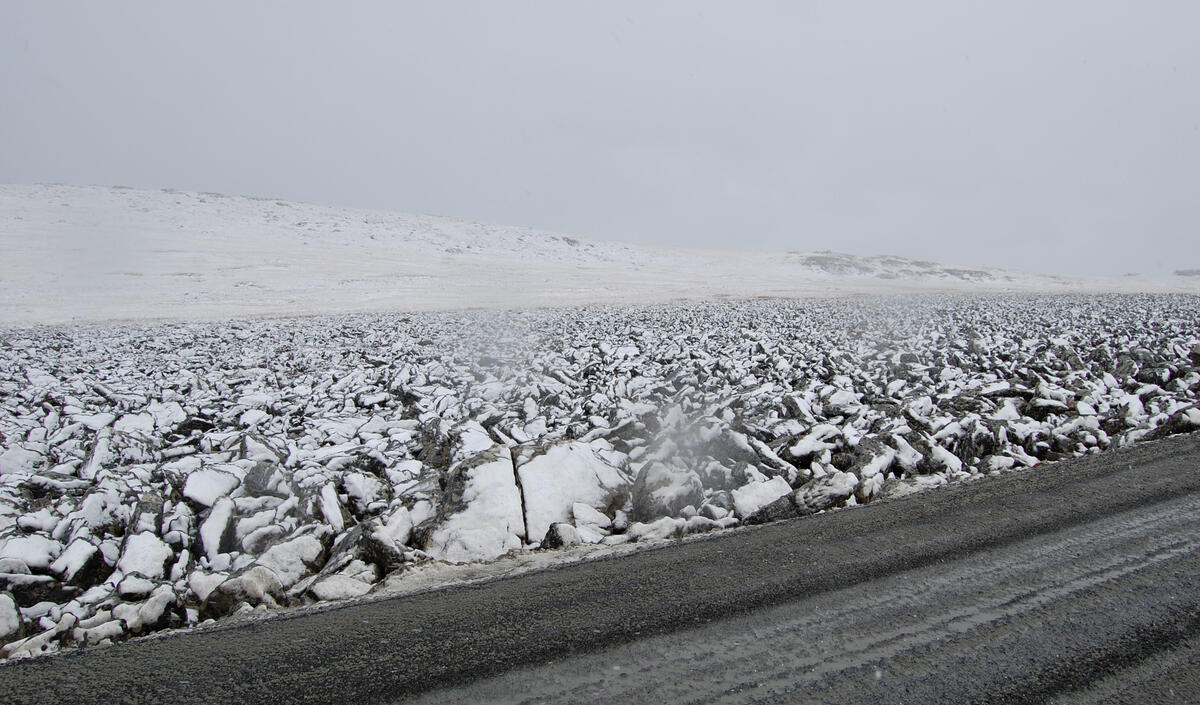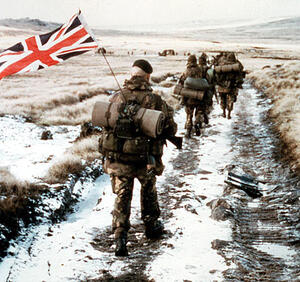
On 2 April 1982, Argentina invaded the Falkland Islands. Following the invasion and occupation Britain sent a naval expeditionary force to retake the islands. Short but fierce naval and air engagements led to a British landing on 21 May and a subsequent land campaign until Argentine forces surrendered on 14 June.
The war led to the deaths of 655 Argentines, 255 British servicemen, and three local Falkland Islanders. The British have since increased their military presence on the islands, with an RAF base with upgraded airstrip for fast reinforcement, and an expanded army garrison. British policy remains one of self-determination for the Falklands’ inhabitants. The British South Atlantic presence provides for a comprehensive search and rescue capability in addition to the purely military objectives.
War and British South Atlantic Presence
The legacy of the war is immediately obvious to visitors, as it results in a military flavor to many Islands events. Governor’s Day is cause for an annual parade, involving veterans and serving military personnel from the bases together with local citizens.
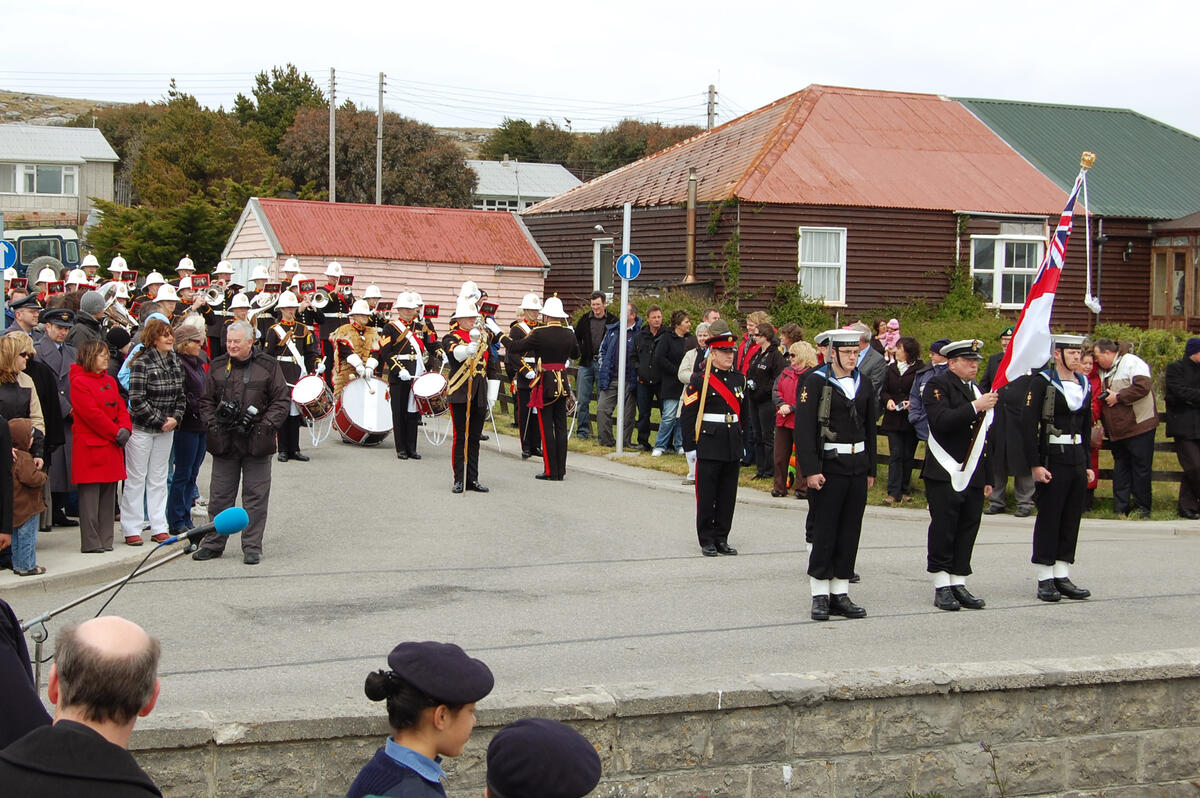
The Governor, in rather traditional ceremonial dress, lies the first wreath at the Cenotaph, which commemorates not the 1982 conflict but rather the Battle of the Falkand Islands – an engagement in 1914 when the Royal Navy hunted down a German squadron in the region after the latter, commanded by Graf von Spee, had earlier sunk two British cruisers and killed 1,500 men off the coast of Chile. This second engagement resulted in almost 2,000 German deaths along with the destruction of six ships, for the loss of less than 30 British – figures to put recent conflicts, although certainly serious, into perspective.
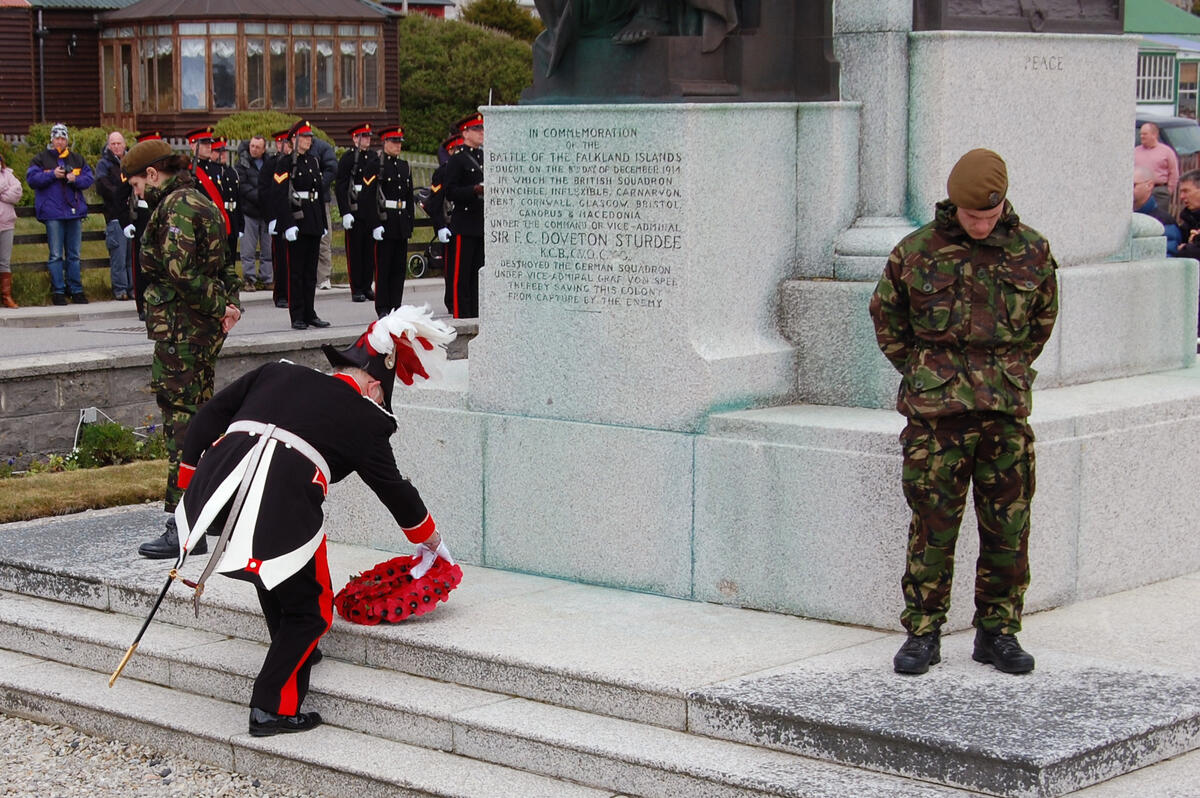
Beneath a statue of obvious maritime significance, Britannia maintains an unfaltering watch.
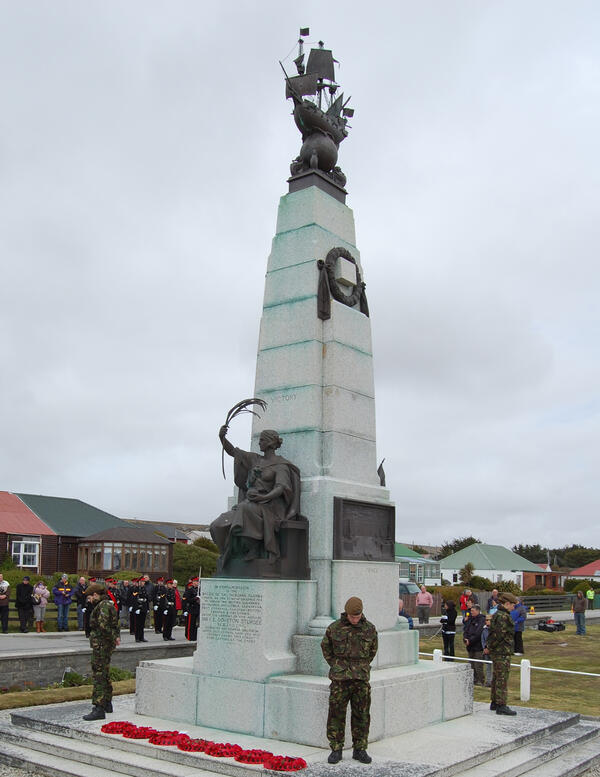
These remembrance ceremonies are amplified by memory of more recent conflict. The Argentines maintain their own cemetaries.
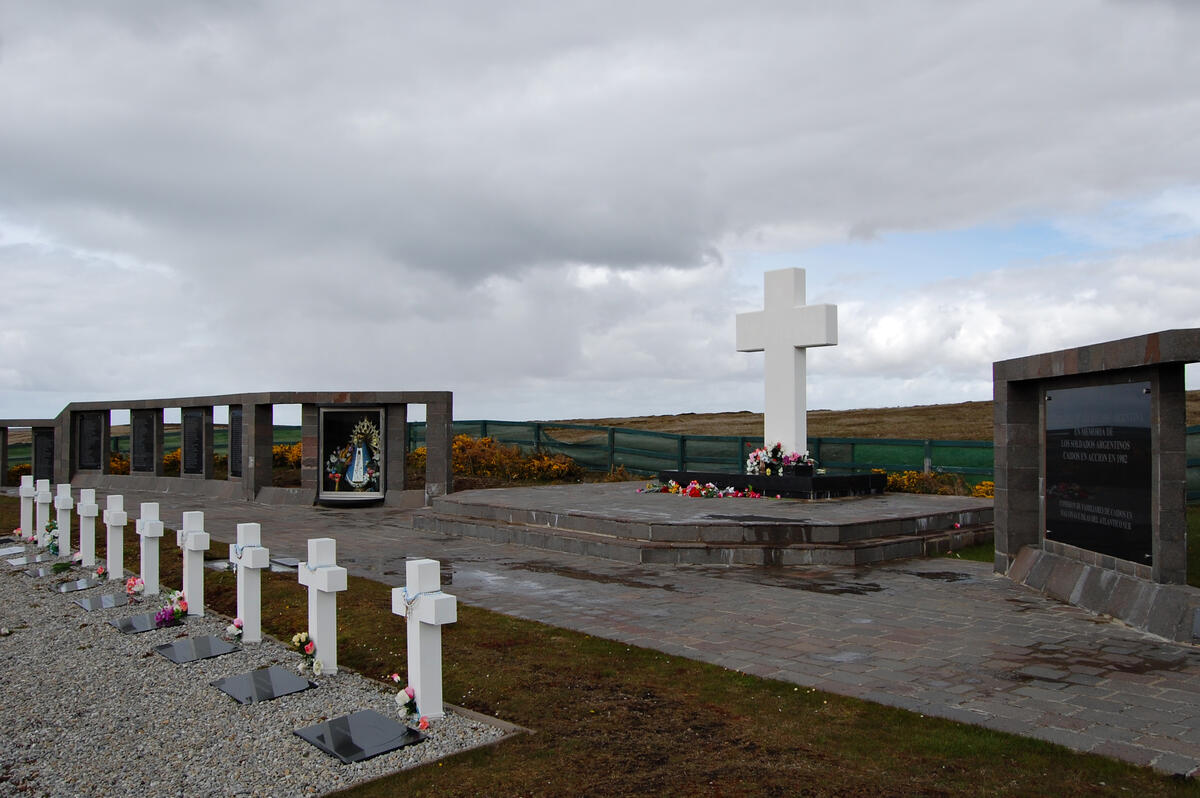
The Argentine junta threw away the lives of 655 soldiers, mostly conscripts with poor levels of training. At the Argentine cemetary lie those not at the bottom of the ocean.
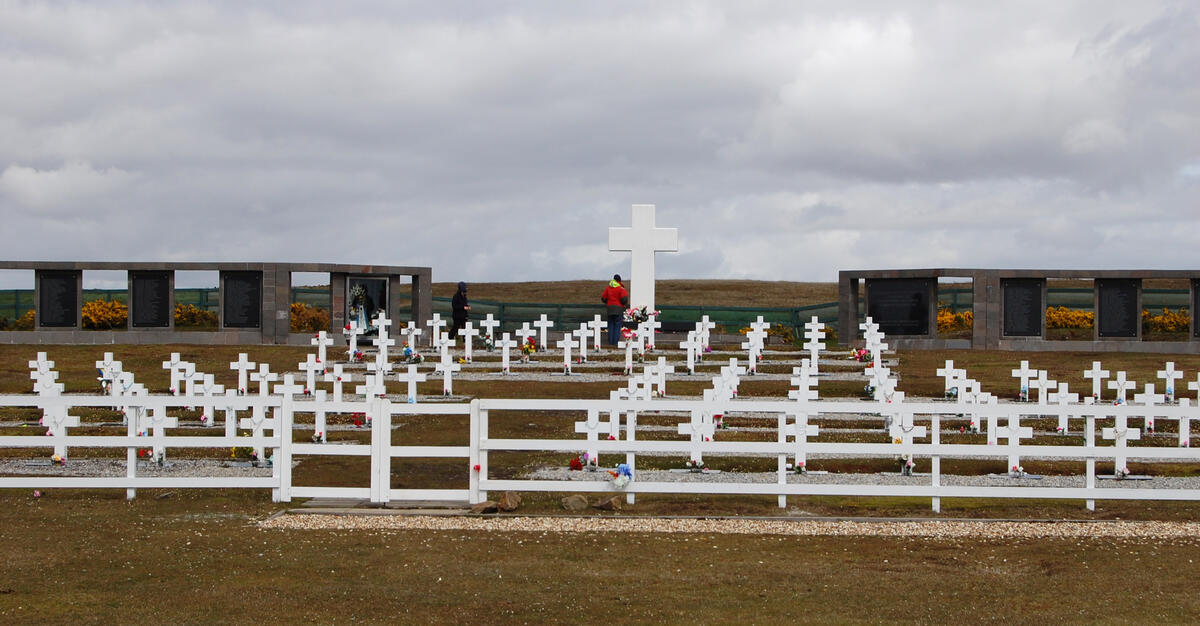
The British one stands for a fewer number but hardly less significant. The plaque inscription speaks for itself.
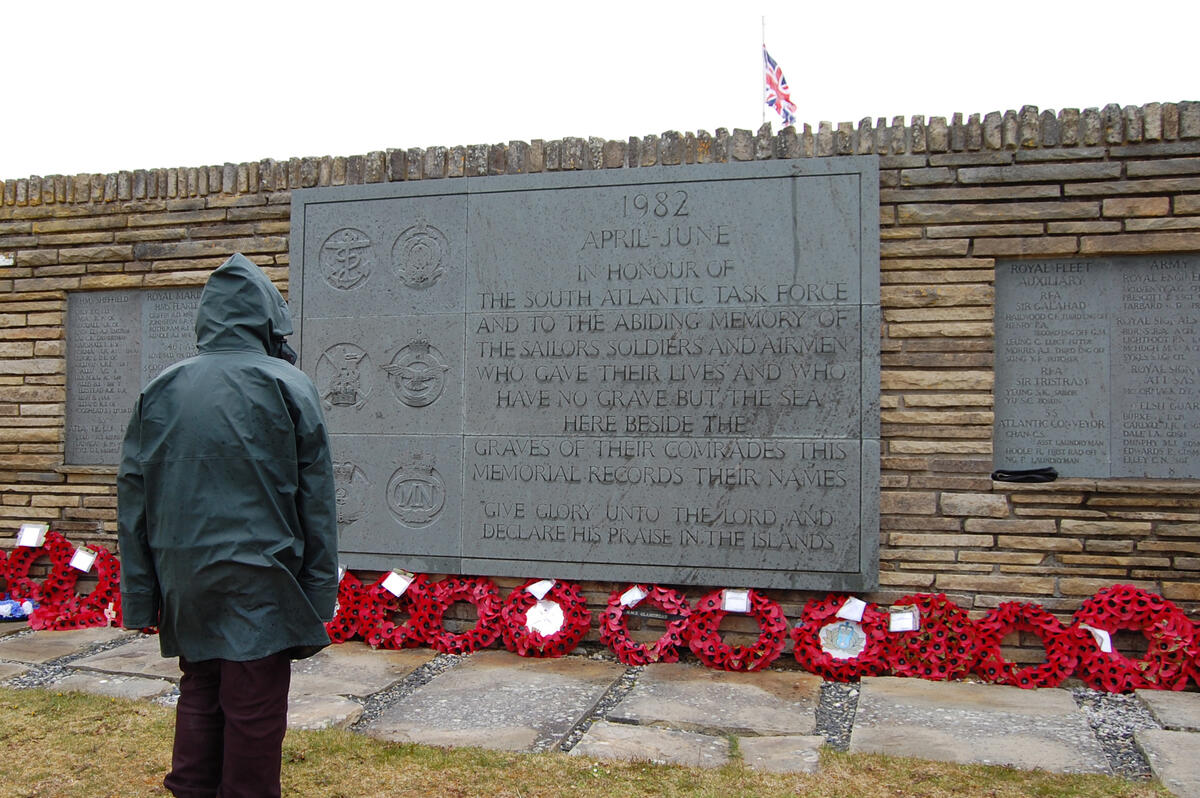
Memorials and other more dangerous reminders, such as uncleared minefields, remain scattered across the islands.
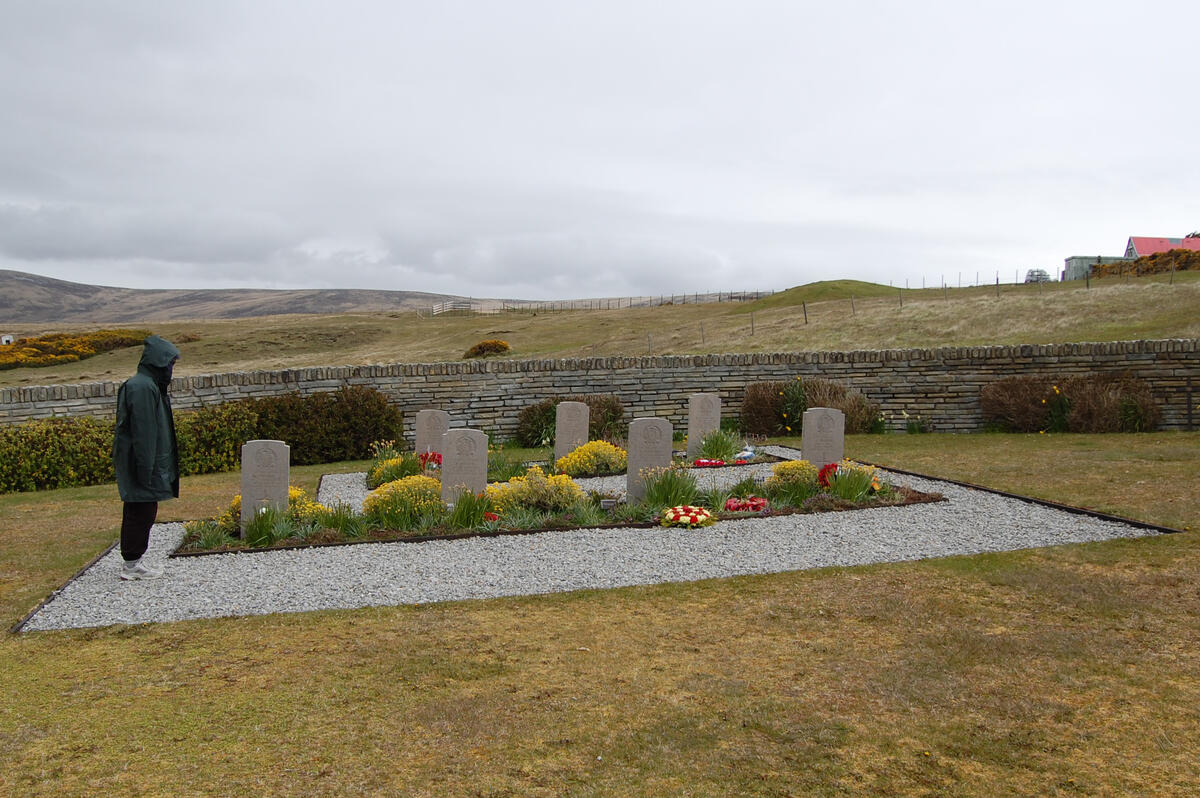
This is part of today’s insurance policy. These Typhoons (Eurofighters) are based locally, and the local terrain and isolation offer a superb training ground for RAF pilots. They maintain a high visibility and often buzz the town and harbor.
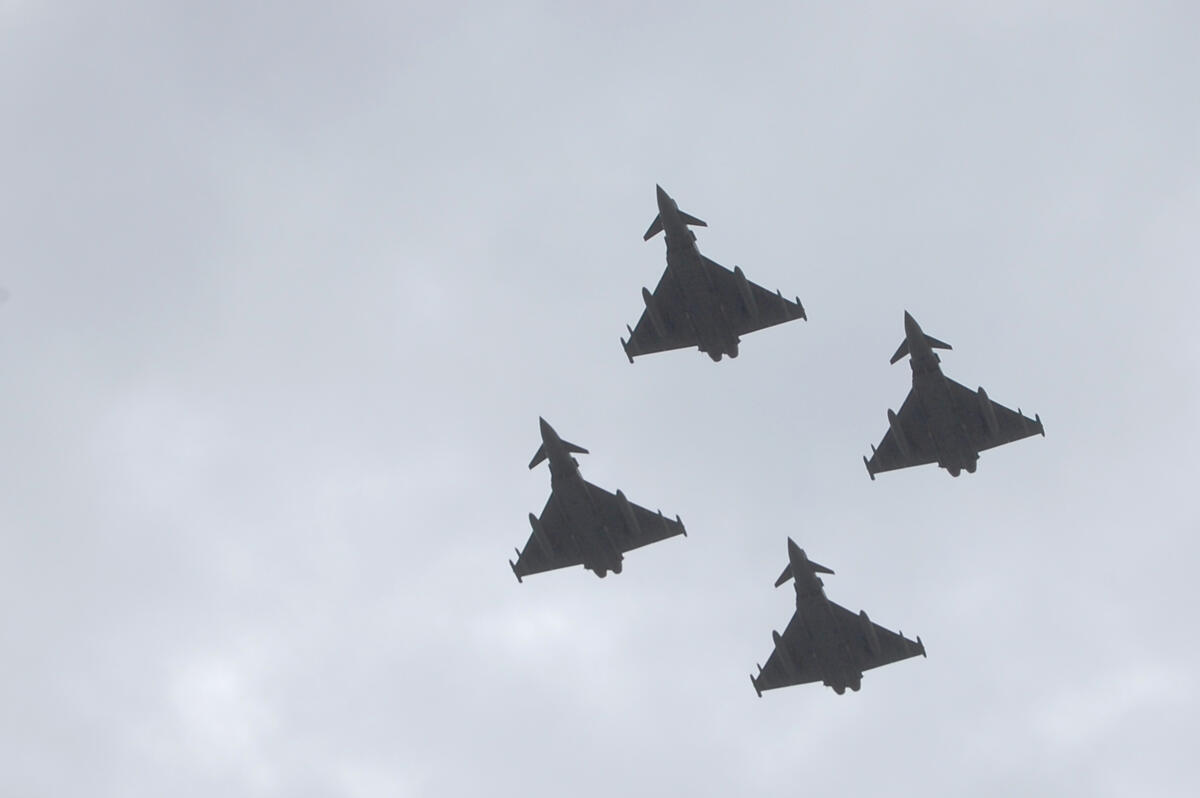
At sea level, the River class 1,850 tonne HMS Clyde is the Royal Navy’s patrol vessel tasked to the Falklands area. She was launched in only 2006.
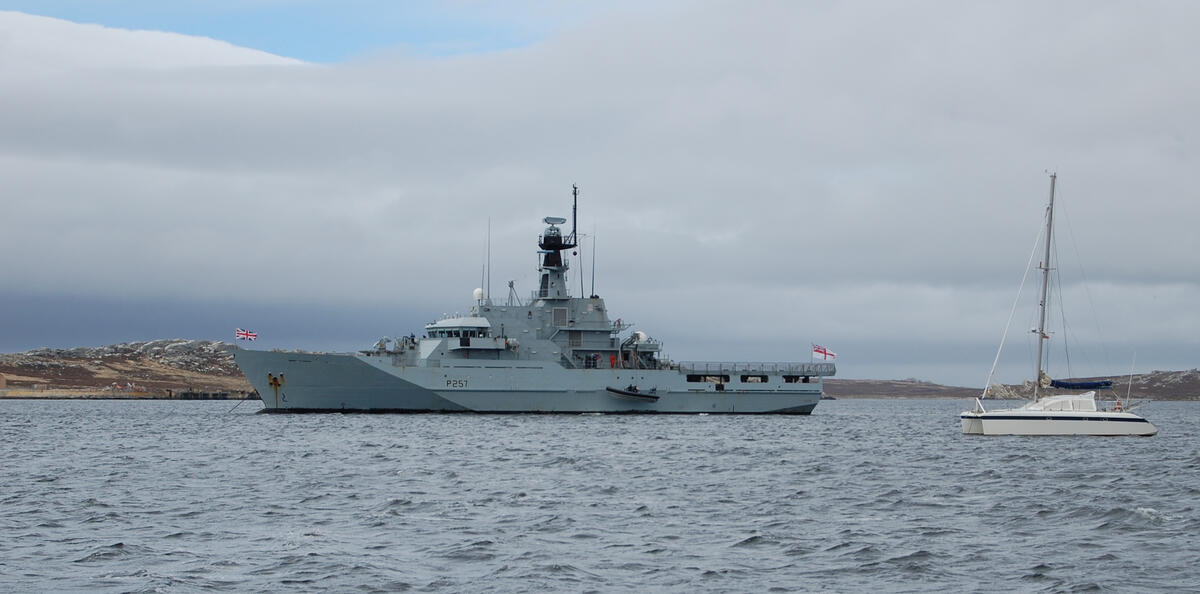
In May 2010, the Clyde went to the aid of a yacht in trouble east of South Georgia Island, rescuing the family crew including two young girls aboard the 18 m (60′) Oyster which was slowly sinking after having hit what is presumed to be a small growler iceberg. This incident, which occured after Kiwi Roa’s own eventful trip to South Georgia, was a timely reminder of the need for boats of appropriate construction with adequate gear when undertaking passages in these more extreme locales.
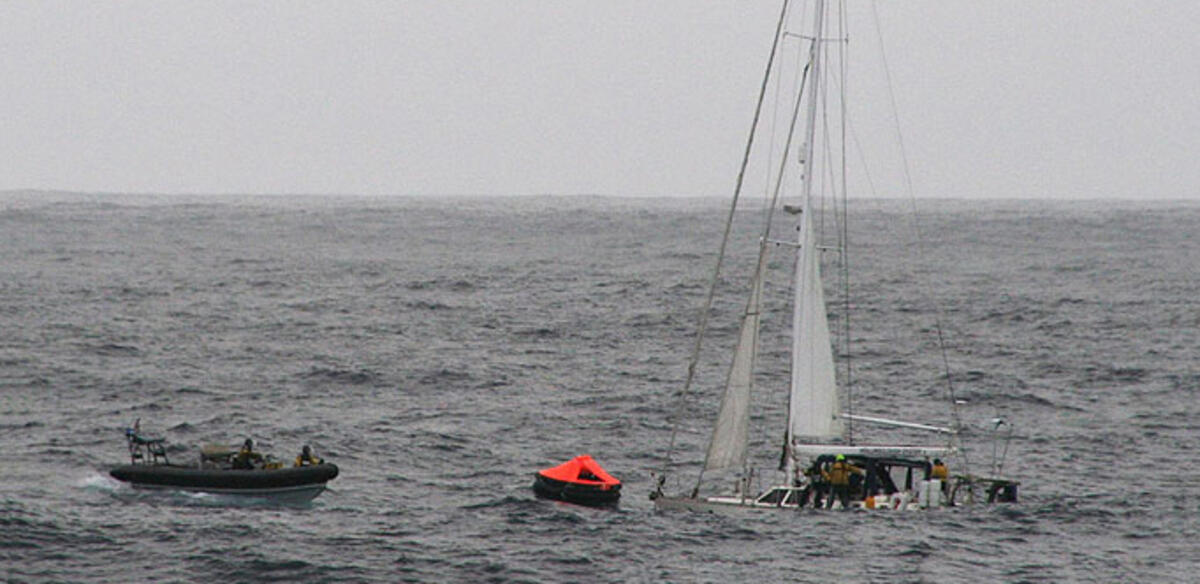
Furthering the search-and-rescue theme, this RAF Sea King will be a familiar form to British boaters.
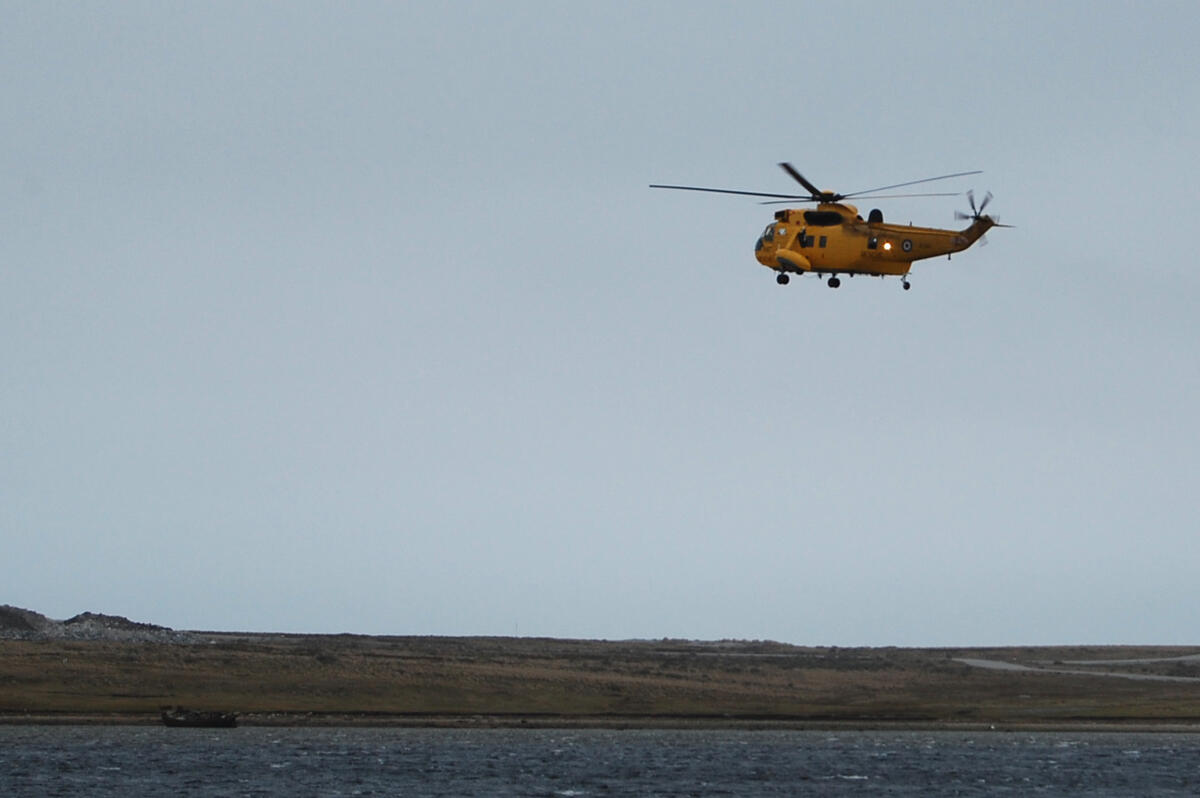
Getting out of Stanley finds oneself in “Camp”, the local colloquialism for inhabited country land outside the town. There exist only tiny settlements. Below is a typical rural homestead.
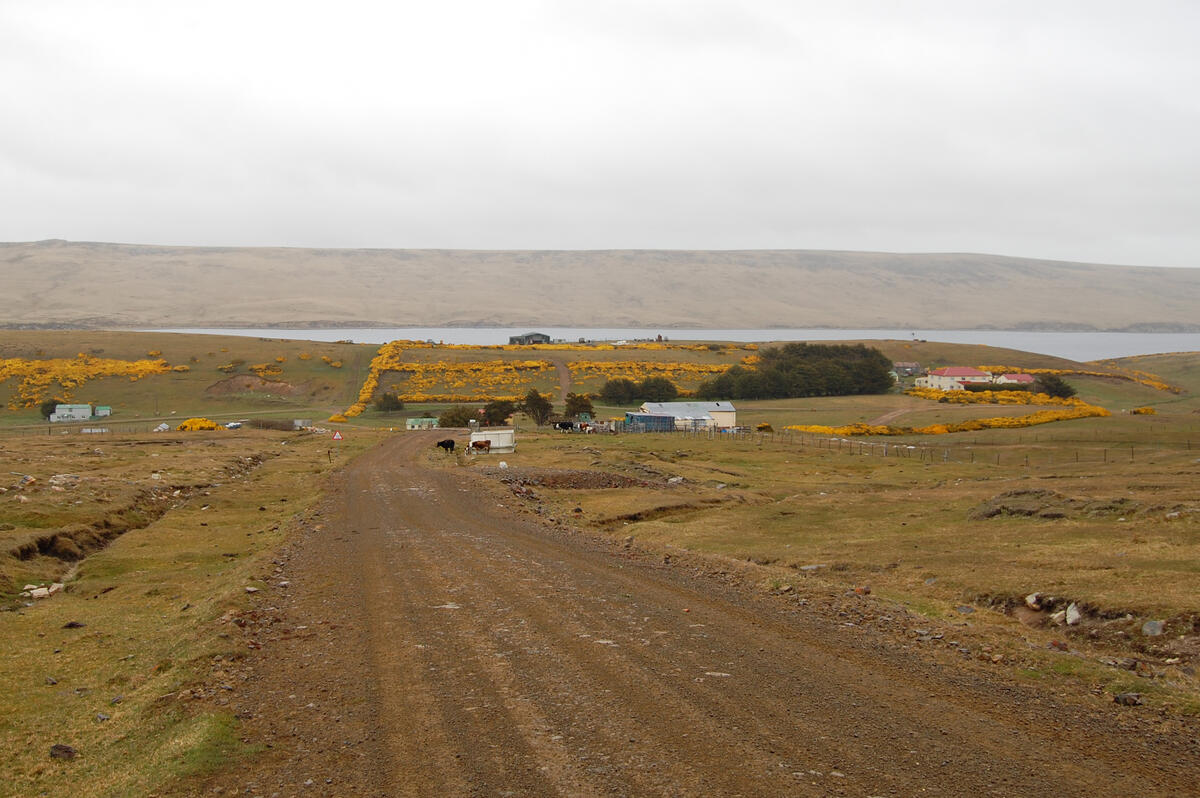
This is typical Falklands terrain.
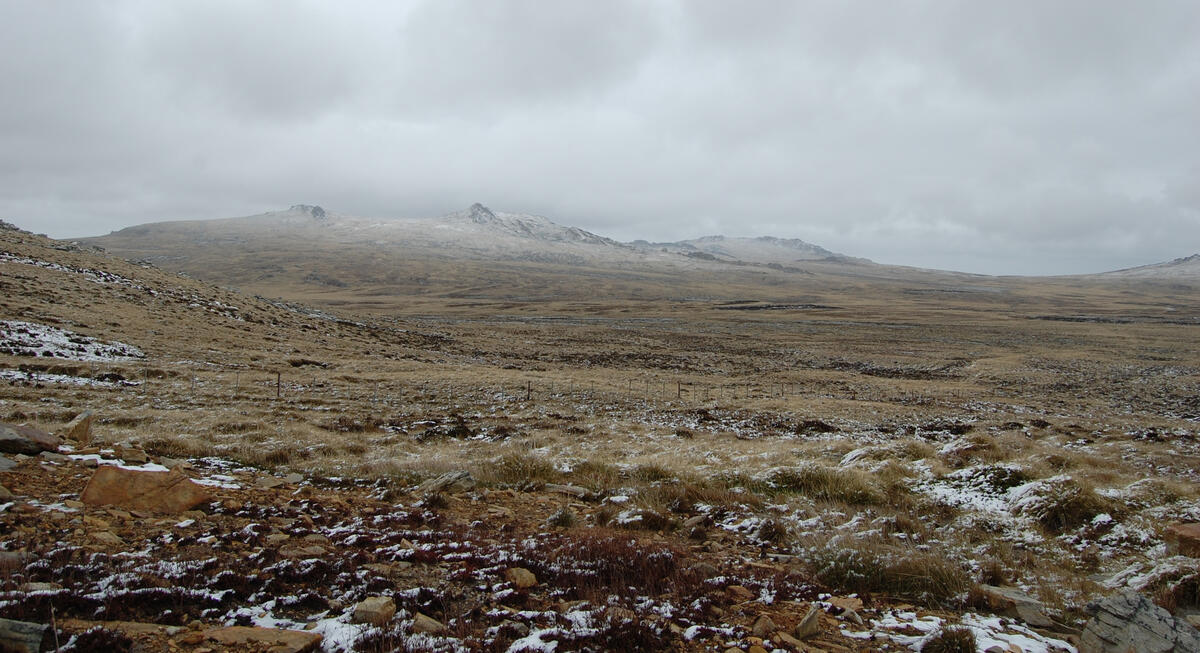
Another common feature found in the desolation is the stone run, a result of the erosion of particular rock varieties caused by numerous freeze-thaw cycles during the Ice Age. We’re not sure it’s much warmer now.
